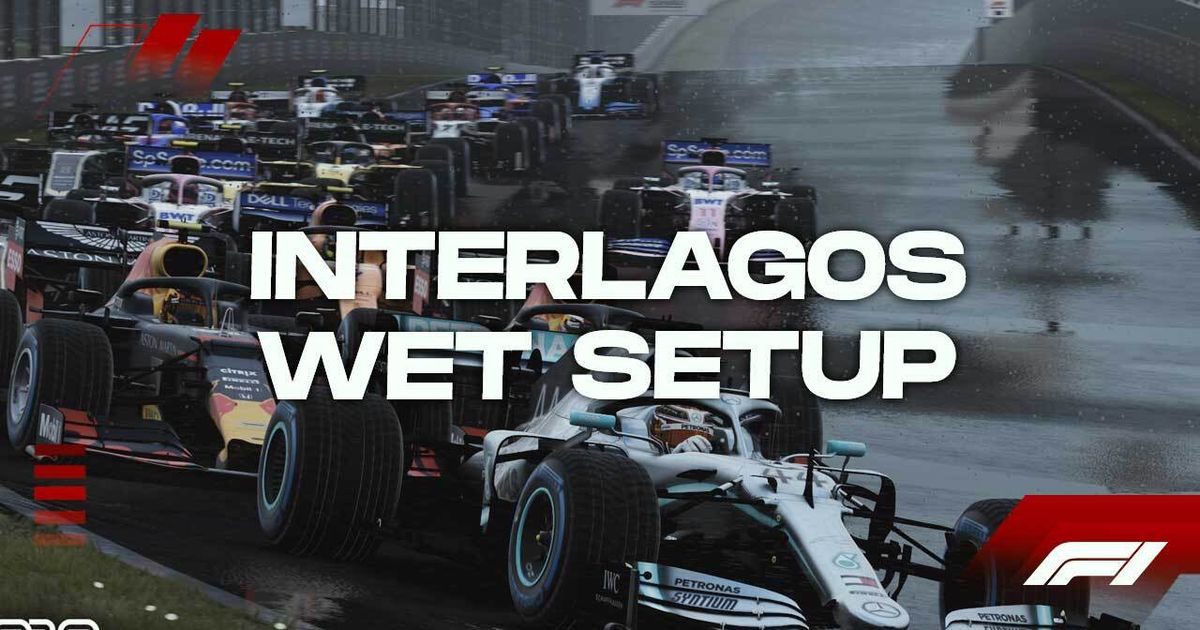Interlagos has produced some of the finest wet races in F1 history. In particular, 2003 and 2008 stand out as shining examples of fascinating races which were affected by rain.
Table of Contents
The circuit is one of the more susceptible to rainfall on the F1 calendar, and this is reflected in the frequency of wet races in at Interlagos in F1 2020. If you find yourself in the rain in Brazil, here’s the setup you need to use.
Aerodynamics
Wet weather generally calls for high levels of downforce, especially at the rear end of the car. A high rear wing angle will provide this, preventing the car from becoming too twitchy under acceleration.
I’ve found that going with 4-10 provides a car with excellent balance at all parts of what is quite a varied circuit.
Transmission
For your on-throttle differential, 50% tends to be the way to go in both the dry and the wet around here. This is because it helps to keep the car stable during traction.
Your off-throttle setting is a little more open to debate, but I would suggest 70%. This will give enough rotation in the slower corners without the car becoming difficult to drive.
Suspension Geometry
Another way to prevent the car from becoming too much of a handful is to run low levels of camber.
Specifically, I recommend running -2.50 and -1.00 for your front and rear camber respectively.
Low levels of toe are beneficial in longer corners, of which Interlagos has several. Therefore, I suggest using 0.05 front toe with 0.20 on the rears.
Suspension
A softer suspension setup is always helpful in the wet, as it helps to reduce the car’s unpredictability.
For me, going as soft as 1-2 yields the best results in these conditions.
For your anti-roll bar settings however, a stiffer setup is better suited to a rainy day’s racing. This is because wet conditions tend to promote roll in the car mid-corner. Therefore, 9-10 is the way to go.
READ MORE: Bahrain Grand Prix track guide
Utilising a high ride height setup is the easiest way to transform a dry setup to one which is suitable in the wet. Here, I would run as high as 9-11 to keep the car stable and drivable.
Brakes
Brake settings are a matter of finding your own personal sweet spot. I always run 100% brake pressure with 50% brake bias as this is what I am comfortable with.
However, if you usually run a lower brake pressure or a higher brake bias, sticking with what you know won’t hurt you here.
Tyres
Rainfall on track means lower pressures for your tyres, as this also helps to maintain a predictable and easy to drive car.
Here, I prefer to run 21.8psi on the fronts along with 19.5psi on the rears. The low rear pressures have the bonus effect of aiding you with your traction.
READ MORE: The best steering wheel for F1 2020
A wet race in Interlagos tends to be an instant classic. With this setup, you’ll be able to make sure you’re one of the winners in the chaos that ensues.
Explore new topics and discover content that's right for you!




